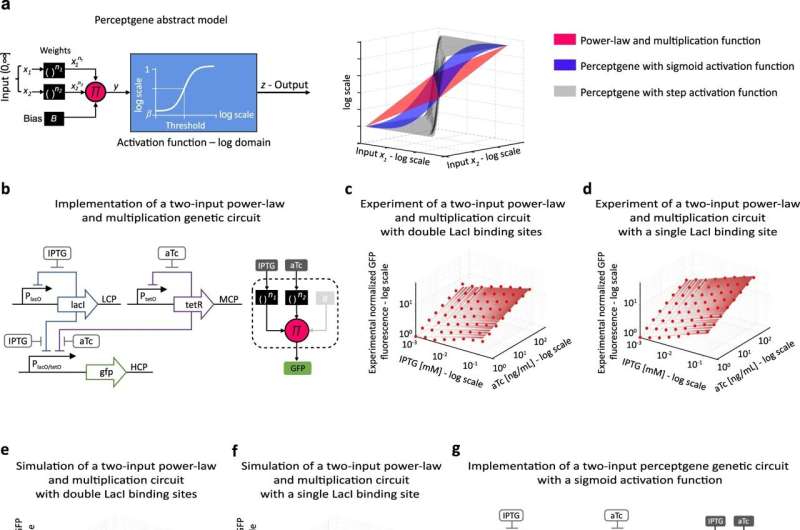Phys.org November 14, 2022
Neuro-inspired models can transform synthetic gene circuit design in a manner that is reliable, efficient in resource utilization, and readily reconfigurable for different tasks. To this end, an international team of researchers (Israel, USA – MIT) has introduced the perceptgene, a perceptron that computes in the logarithmic domain, which enables efficient implementation of artificial neural networks in Escherichia coli cells. They successfully modified perceptgene parameters to create devices that encode a minimum, maximum, and average of analog inputs. With these devices, they created multi-layer perceptgene circuits that compute a soft majority function, perform an analog-to-digital conversion, and implement a ternary switch. They also created a programmable perceptgene circuit whose computation could be modified from OR to AND logic using small molecule induction. According to the researchers, their work shows that their approach enables circuit optimization via artificial intelligence algorithms…read more. Open Access TECHNICAL ARTICLE

Perceptgene theory and implementation. Credit: Nature Communications volume 13, Article number: 5602 (2022)